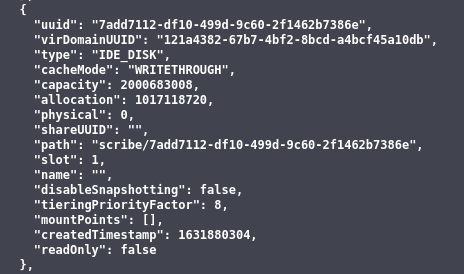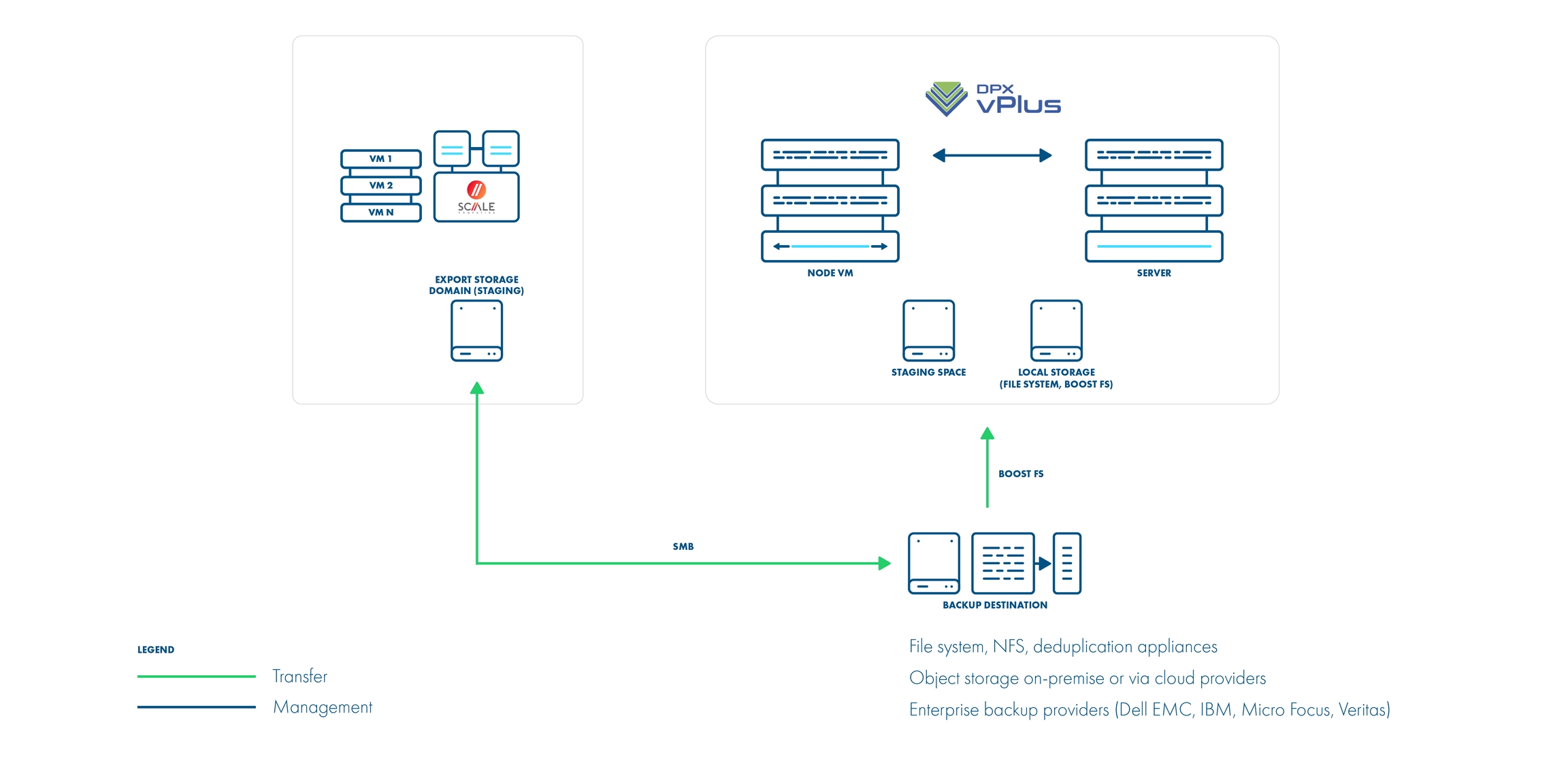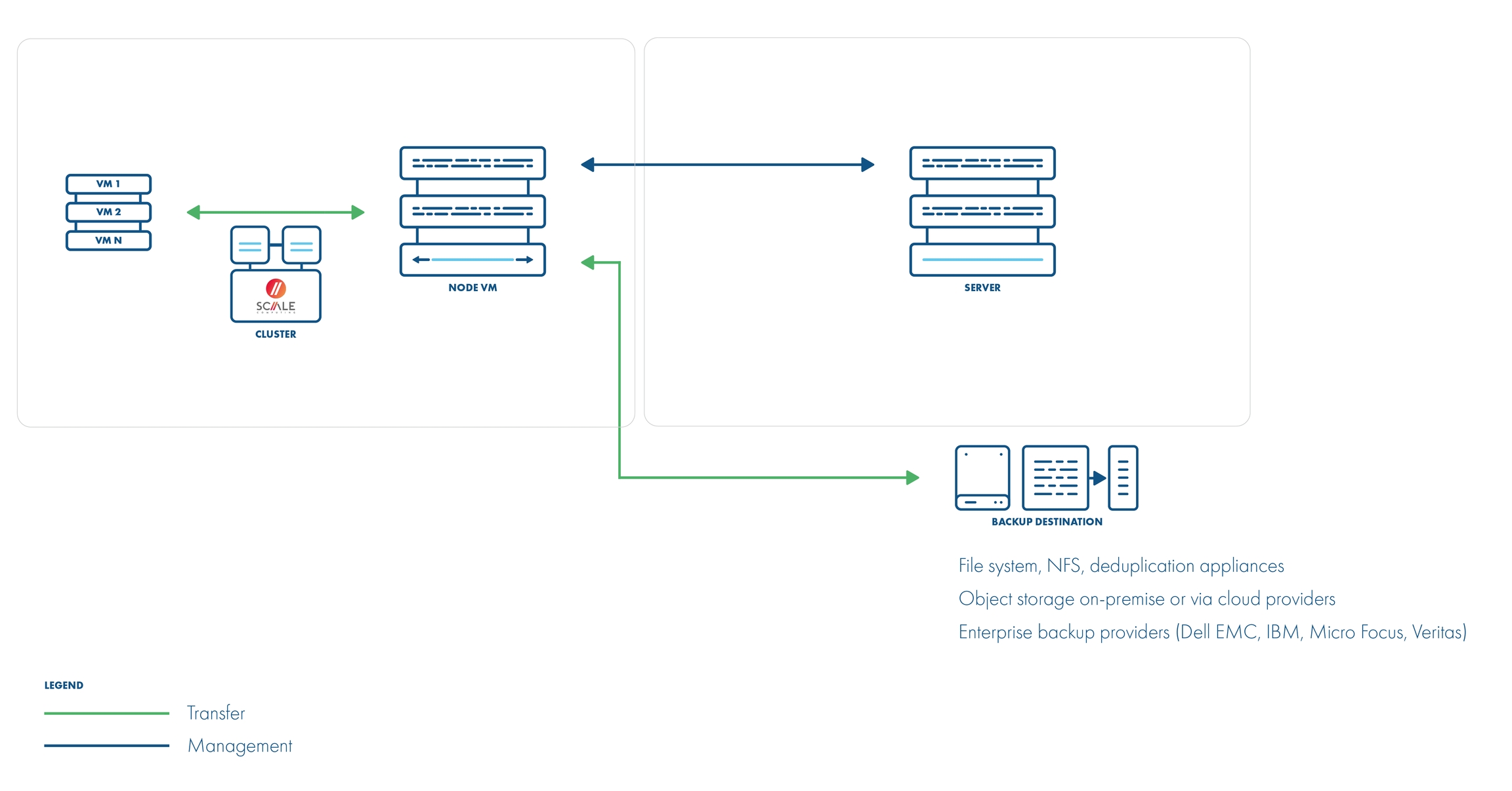SC//Platform
General
All the operations are using REST API to communicate with the HC3 cluster. Depending on the version of SC//Platform, additional configuration of the cluster may be required.
REST API should be enabled in the settings.

Before taking a snapshot, the current state of the
disableSnapshottingflag of every disk in the virtual machine is checked. If even one of the disks has disabled snapshotting, the snapshot task ends with the error. All disks with disabled snapshotting are listed in the error message.

Backup Strategies
Export Storage Domain Strategy
Export storage domain strategy performs the export using a Samba server running on a node machine. This strategy does not require a proxy VM.
In general, the export process is as follows:
• A snapshot of the virtual machine is taken
• Samba server is started on the node machine and export share is added
• Export of the VM to created SMB share is ordered
• Export share is removed, and Samba server is stopped after vPlus finishes copying files
• Metadata of the excluded disks is exported
In general, the restore process is as follows:
• Samba server is started on the node machine and import share is added
• Import of the VM to the created SMB share is ordered
• Empty disks for excluded disks are added to the restored VM
• Import share is removed and Samba server is stopped

Disk Attachment Strategy
Disk attachment strategy performs the export using a proxy VM running on the HC3 cluster.
In general, the export process is as follows:
• A snapshot of the virtual machine is taken
• The disks from the taken snapshot that were not excluded are attached to the proxy VM
• If full export is being performed, then the whole content of the attached disks is saved to the backup files. If incremental export is being performed, then the list of changed blocks is first retrieved and then only the content of these blocks is saved.
• The disks are detached from the proxy VM
In general, the restore process is as follows:
• A new virtual machine is created using exported metadata
• Empty disks are attached to the proxy VM
• Content of the exported disk files is written to the attached disks
• The restored disks are then reattached from the proxy VM to the restored VM
• List of boot devices for the restored VM is set

Adding HC3 as Hypervisor Manager
When adding a new SC//Platform as Hypervisor Manager in vPlus, configure the following fields:
• URL: Address of HC3 hypervisor server: hostname or IP with HTTPS
• Fill in the admin username and password for HC3
• Select the export method
• The node configuration responsible for backup operations